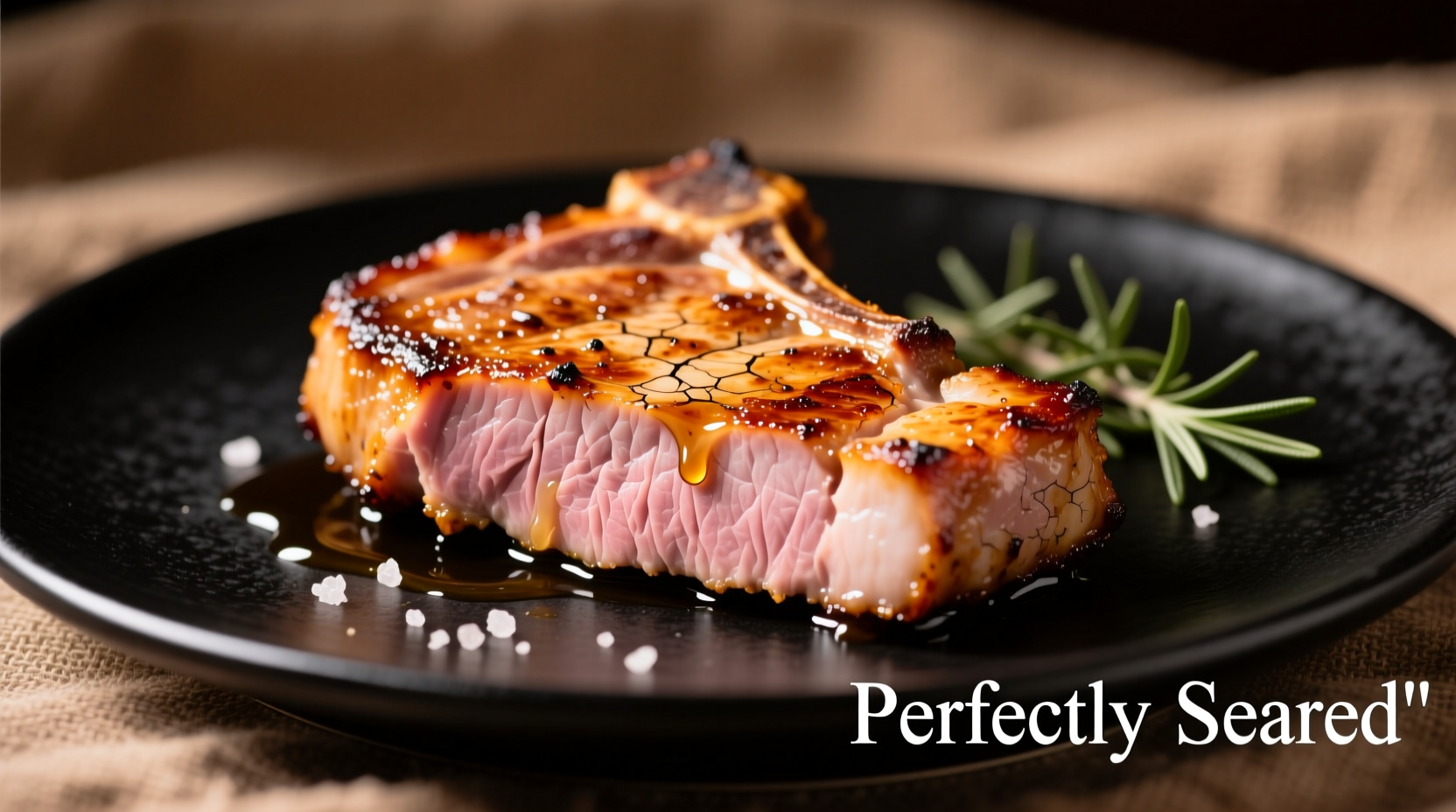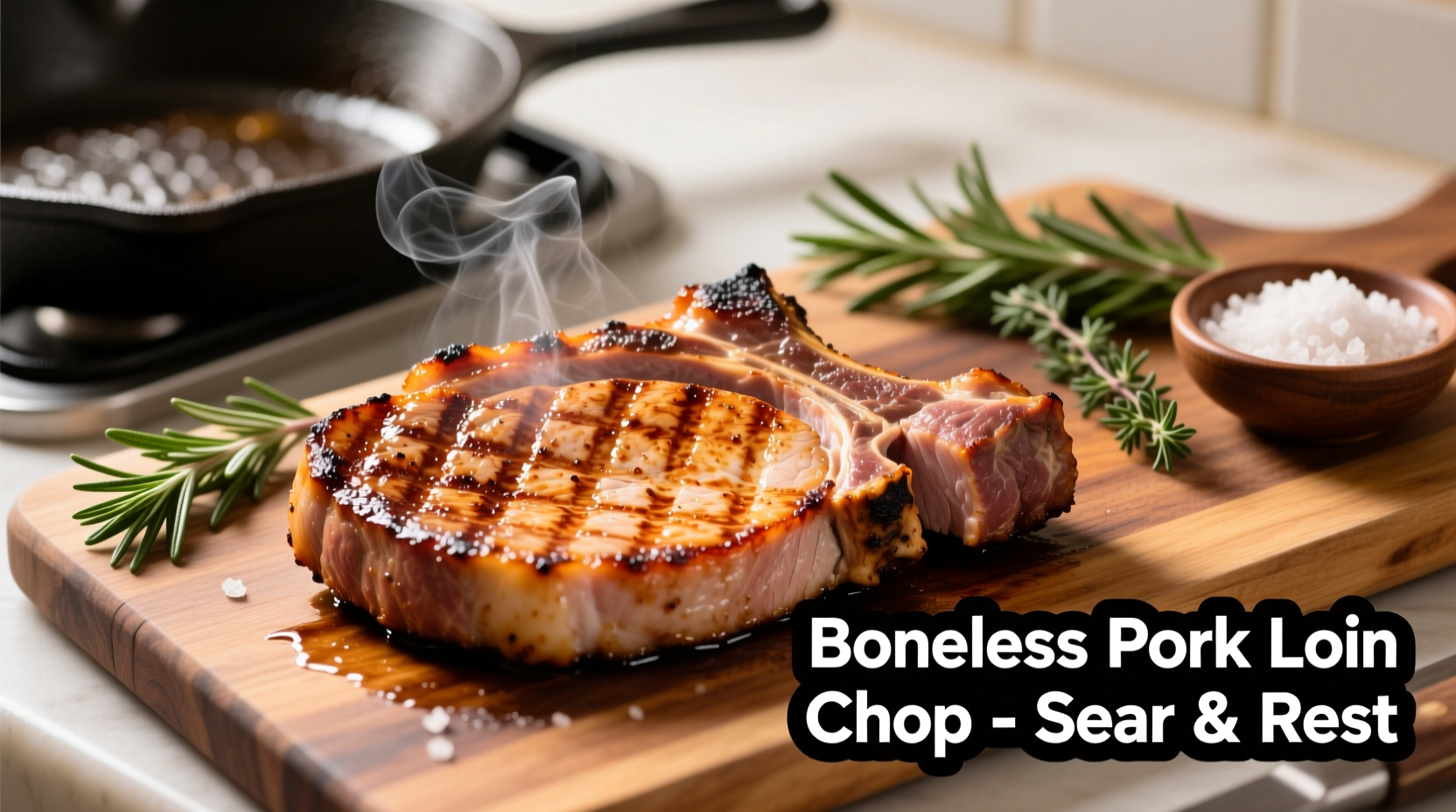Perfectly cooked boneless pork loin chops reach an internal temperature of 145°F (63°C) with a 3-minute rest time, resulting in juicy, tender meat with a golden-brown crust. This guide provides professional techniques for pan-searing, oven-roasting, and grilling that prevent drying while maximizing flavor.
The Ultimate Guide to Cooking Boneless Pork Loin Chops
Nothing beats a perfectly cooked pork loin chop—tender, juicy, and bursting with flavor. Yet many home cooks struggle with dry, tough results. The secret lies in precise temperature control and proper technique. As a chef with years of experience teaching home cooks professional methods, I'll show you exactly how to achieve restaurant-quality pork loin chops every time.
Why Boneless Pork Loin Chops Need Special Attention
Boneless pork loin chops come from the muscle along the pig's backbone and contain less fat than other cuts. This lean profile makes them prone to drying out when cooked improperly. Unlike bone-in chops that benefit from the bone's insulating effect, boneless versions require careful monitoring of cooking time and temperature.
| Cooking Method | Recommended Time | Internal Temp | Rest Time |
|---|---|---|---|
| Pan-searing | 4-5 min per side | 145°F (63°C) | 3-5 minutes |
| Oven-roasting | 12-15 min at 400°F | 145°F (63°C) | 5-7 minutes |
| Grilling | 6-8 min per side | 145°F (63°C) | 4-6 minutes |
Essential Preparation Steps
Proper preparation sets the stage for perfect results:
- Temperature equilibrium: Remove chops from refrigerator 30 minutes before cooking. Cold meat cooks unevenly.
- Dry surface: Pat chops thoroughly with paper towels. Moisture prevents proper browning.
- Seasoning timing: Salt at least 40 minutes before cooking or immediately before. Avoid salting between 3-30 minutes as this draws out moisture.
- Thickness check: Measure thickness with a ruler. Adjust cooking time accordingly—add 1-2 minutes per additional 1/4 inch.

The Professional Cooking Timeline
Understanding the cooking evolution helps prevent common mistakes:
- 0-2 minutes: Initial sear creates Maillard reaction for flavor development. Don't move chops during this critical phase.
- 2-4 minutes: Protein fibers begin contracting, squeezing out moisture. Proper fat rendering starts.
- 4-6 minutes: Internal temperature rises rapidly. This is when overcooking happens if not monitored.
- 6-8 minutes: Carryover cooking continues after removal from heat. This is why resting is essential.
Three Reliable Cooking Methods Compared
Each cooking method has specific applications depending on your equipment and desired outcome:
Pan-Searing for Maximum Crust (Best for 1-1.5 inch chops)
Ideal when you want a restaurant-quality crust with minimal equipment. Follow these steps:
- Heat 1 tbsp oil in heavy skillet (cast iron preferred) over medium-high heat until shimmering.
- Place seasoned chops in pan without crowding. Sear undisturbed for 4-5 minutes.
- Flip and add 2 tbsp butter, smashed garlic, and fresh herbs to pan.
- Tilt pan and spoon melted butter over chops for 2-3 minutes.
- Remove when internal temperature reaches 140°F (60°C).
Oven-Roasting for Even Cooking (Best for thicker chops)
Perfect when cooking multiple chops or when you want hands-off cooking:
- Preheat oven to 400°F (204°C).
- Sear chops in hot skillet for 2-3 minutes per side.
- Transfer skillet to oven (if oven-safe) or place chops on baking sheet.
- Cook until internal temperature reaches 140°F (60°C), typically 8-12 minutes.
- Remove and rest before serving.
Grilling for Smoky Flavor (Best for outdoor cooking)
Creates beautiful grill marks with subtle smokiness:
- Preheat grill to medium-high (400-450°F).
- Oil grates thoroughly to prevent sticking.
- Place chops on grill at 45° angle to create crosshatch marks.
- Cook 6-8 minutes per side, turning once.
- Move to cooler part of grill if flare-ups occur.
- Remove at 140°F (60°C) and rest.
Avoid These Common Mistakes
Based on culinary research from the USDA Food Safety and Inspection Service, these errors compromise your results:
- Overcooking: Pork is safe at 145°F (63°C), not 160°F as previously recommended. Higher temperatures cause excessive moisture loss.
- Skipping the rest: Cutting immediately releases precious juices. The 3-minute minimum rest allows juices to redistribute.
- Crowding the pan: Creates steam instead of sear. Cook in batches if necessary.
- Using low smoke-point oils: Extra virgin olive oil burns at high temps. Use avocado, canola, or grapeseed oil instead.
Serving and Storage Tips
Maximize your cooking results with these professional finishing touches:
- Slice chops against the grain at a 45° angle for maximum tenderness
- Serve with acidic components like lemon wedges or apple sauce to cut richness
- Store leftovers in airtight container for up to 3 days
- Reheat gently in 275°F oven until internal temperature reaches 130°F
- Freeze uncooked chops for up to 6 months; cooked chops for 2-3 months
When Different Methods Shine
Understanding context boundaries helps you choose the right technique:
- Weeknight dinner: Pan-searing works fastest with minimal cleanup
- Entertaining guests: Oven-roasting allows you to focus on sides while chops cook
- Summer cooking: Grilling keeps heat outside and adds smoky dimension
- Thick-cut chops (1.5+ inches): Oven method prevents exterior burning before interior cooks
- Thin chops (under 1 inch): Quick pan-sear prevents overcooking











 浙公网安备
33010002000092号
浙公网安备
33010002000092号 浙B2-20120091-4
浙B2-20120091-4